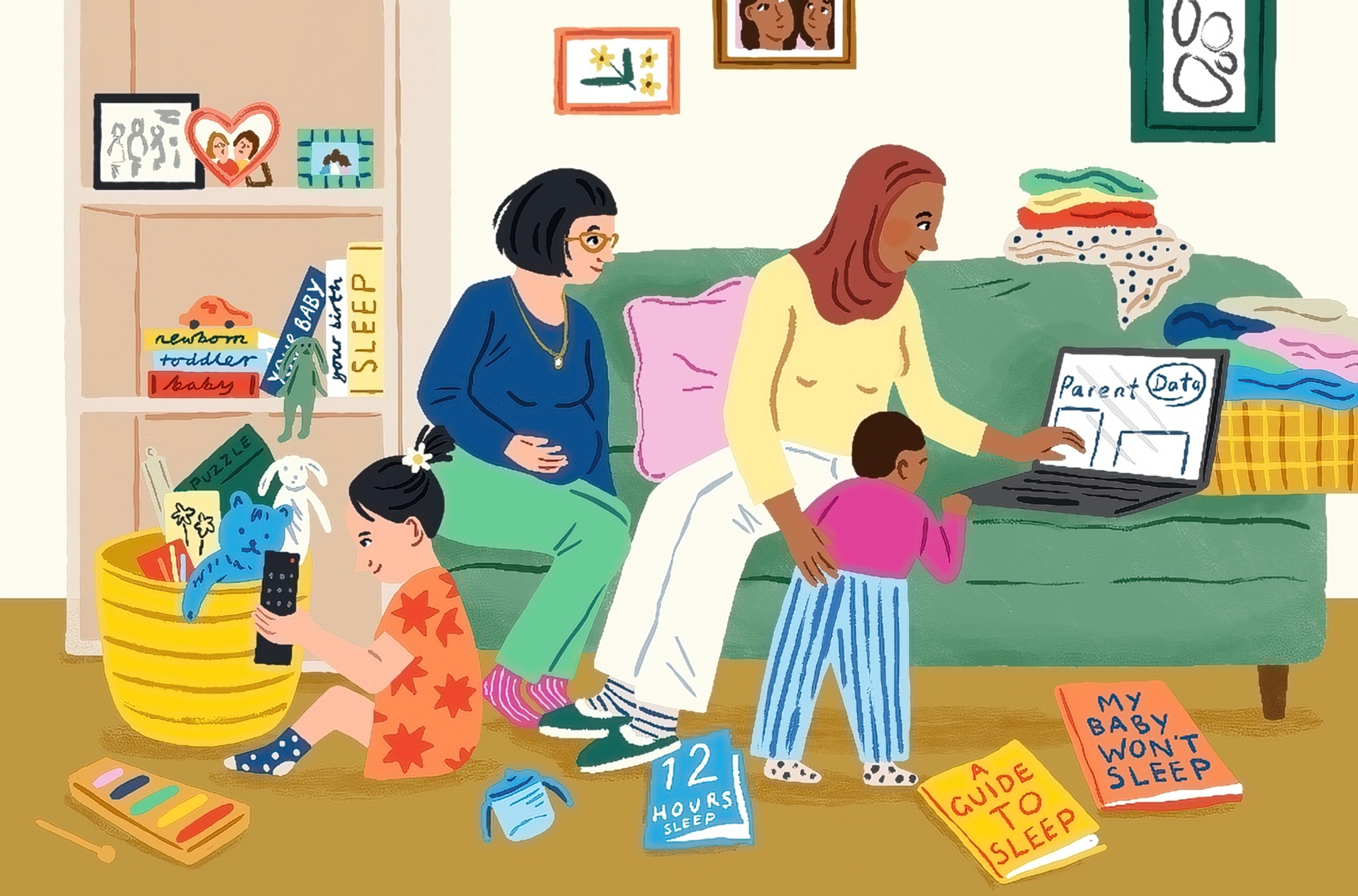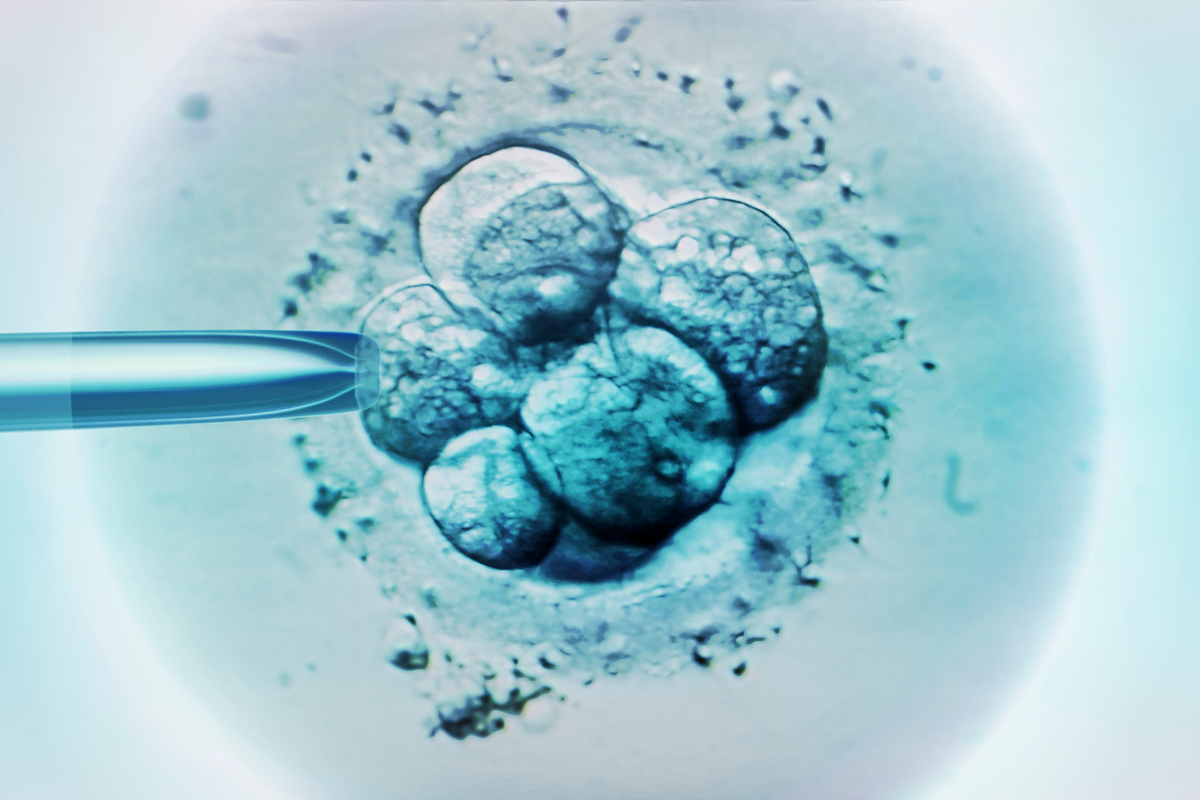When we discuss infertility, we often focus on “primary infertility,” a situation defined as one in which a couple is unable to conceive after 12 months of regular unprotected sexual intercourse. (I know the term is also used more colloquially, but this is the formal definition.) Less discussed, but only somewhat less present, is secondary infertility: an inability to conceive after a prior non-treatment-assisted conception.
Secondary infertility is often unexpected. Before beginning to try to get pregnant for the first time, many of us are preoccupied by some version of the worry: Will it work? But if it did work the first time, finding it hard a second time can be, among many other feelings, simply confusing.

In addition to being confusing and frustrating, secondary infertility is an experience many parents find themselves fundamentally unsupported in. Comments like, “Well, you should feel lucky you have one!” may be well-meaning (or may not be) but can be incredibly hurtful.
I’m going to try to work through some of the confusion, normalize this experience, and answer some of the more specific questions we have gotten over the years about it.
What is secondary infertility?
Similar to primary infertility, secondary infertility is defined as the inability to conceive after 12 months of regular unprotected sexual intercourse. The difference is that secondary infertility occurs after a prior non-assisted conception.
The definition seems simple, but a diagnosis isn’t always so clear.
First, note that if a prior pregnancy was conceived through IVF or other assisted reproduction, then a later difficulty conceiving would not be defined as secondary infertility (effectively, it would be a continuation of primary infertility). There isn’t specific language for this situation. As one reader told me, “There’s no language for those who have gone through primary and then secondary infertility, so I just say, ‘I’m continuously infertile.’ ”
Second, there can be circumstances after a first birth (notably, breastfeeding) in which you are not ovulating for a known reason. Failure to conceive during this period would not be considered secondary infertility, even if you were having unprotected intercourse.
Finally, there is a distinction between fertility and fecundity. “Fertility” refers to conception. “Fecundity” refers to live birth. It is possible to be fertile but not fecund (which would be reflected, for example, in conceptions followed by miscarriages). However, when data is collected on this, they are often conflated. In fact, in most of the data I’ll cover below, we’re actually talking about fecundity rather than fertility. Data on conceptions is just more difficult to collect in large surveys than data on births.
How common is secondary infertility?
This is a complicated question to answer with data. Ideally, it would be addressed as follows. You’d start with a large cohort of couples who are trying to conceive. You’d follow them over time. Some of them would be unable to conceive initially; this would give you an estimate of the rate of primary infertility. Some would be able to conceive a first child but then would be unable to conceive a second child. Ideally, you’d limit your analysis in the second case to those who tried to conceive a second child.
Even this “ideal” approach is challenging. For example, couples who had an easier time conceiving a first child may be more likely to try for a second child, in which case, the share of people who would experience secondary infertility if everyone tried for a second kid would be underestimated.
In practice, we do not generally have prospective data of this type. Instead, researchers use surveys in which couples are asked about their desire for more children, and where fertility histories are available. Globally, a huge number of these surveys exist. This paper summarizes data from 277 surveys across the world. The authors calculate a rate of primary infertility, measured as childlessness among couples who express a desire for children, are not using contraception, and have been together for at least five years. And they calculate a rate of secondary infertility — measured as a lack of additional children among couples with at least one prior birth who express a desire for more children, are not using contraception, and for whom it’s been at least five years since the last child.
(The paper is an example of the confusing rhetoric of fertility versus fecundity; it talks about this as infertility, but the measurement is actually fecundity.)
In these data, the primary infertility rate is low: about 2%. The secondary infertility rate is much higher, about 10%, but that is a bit misleading. For women ages 20 to 24, the secondary infertility rate was only 2.6% (almost exactly the same as the primary infertility rate). For women in their 40s, it was 25%.
In a smaller sample but closer to home, one survey of about 4,000 American college graduates concluded that the primary infertility rate was 3.1%, with a secondary infertility rate of 14%.
What this data suggests is that secondary infertility may actually be slightly more common than primary infertility (this is echoed in other studies). A lot of it seems to be about age. As women age, fertility (and fecundity) decline. When we look at the multi-country study above, for the youngest age group, secondary infertility occurs at approximately the same rate as primary infertility. The fact that the overall average is higher seems to reflect the fact that it includes, on average, an older group of people.
What factors increase the risk of secondary infertility?
Other than age, are there other risk factors here? More specifically, are there risk factors beyond those for primary infertility?
Many of the risk factors are the same. And, on average, if you had a difficult time getting pregnant the first time, it is informative about later pregnancies. This correlation isn’t perfect! Plenty of people struggle with a first pregnancy and find themselves unexpectedly pregnant a second time.
It may be most helpful to switch from thinking about just two categories — fertile and infertile — and instead think about a continuum ranging from very fertile to completely infertile. If it took a long time to get pregnant the first time, that suggests something about your underlying fertility, but it’s not perfectly predictive. It could just be bad luck, and conversely, if you got pregnant easily the first time, that could have just been good luck. But, overall, if pregnancy was harder to achieve the first time, it is likely to be harder to achieve the second because you have learned something about your overall fertility.
It is also possible that complications during an earlier childbirth — particular issues with the placenta, for example, or multiple cesarean sections — could make it more difficult to conceive or carry a pregnancy. This would be something to discuss with your doctor if you had complications the first time.
What is the treatment for secondary infertility?
Secondary infertility is treated in the same way as primary infertility. This means a range of approaches, from medications like Clomid that spur egg production to sperm evaluations and IVF. There isn’t much good data on how effective these methods are in secondary versus primary infertility. Again, age is a complicated confound here. These approaches also decline somewhat in their success rates with age. If you’re facing this issue, a fertility specialist will be your best resource.
Resources for secondary infertility
In my writing on pregnancy and parenting, one thing I have consistently found is that when a concern or condition is not openly discussed, people often fail to seek help when they need it.
If you are experiencing primary or secondary infertility, don’t suffer in silence. There’s a wealth of services to tap into, many ways to find support, and get involved. Attend an event, share your story, and learn more about RESOLVE’s mission to remove barriers for people who need help building their family. Their Get Help page is a great place to start. You are not alone.
The bottom line
- Secondary infertility is different from primary infertility in that it’s diagnosed after a prior, non-assisted pregnancy. It is slightly more common than primary infertility, but the data on this is a bit complicated because fecundity (live birth) and fertility (conception) are often conflated.
- With age being the most significant, risk factors for both secondary and primary infertility overlap quite a bit, including difficulties conceiving and earlier childbirth complications.
- If you’re struggling to conceive additional children, it’s not unusual, and you’re not alone. There are resources and a range of approaches to help, from Clomid to IVF, that you can discuss with your doctor when you’re ready





















Log in